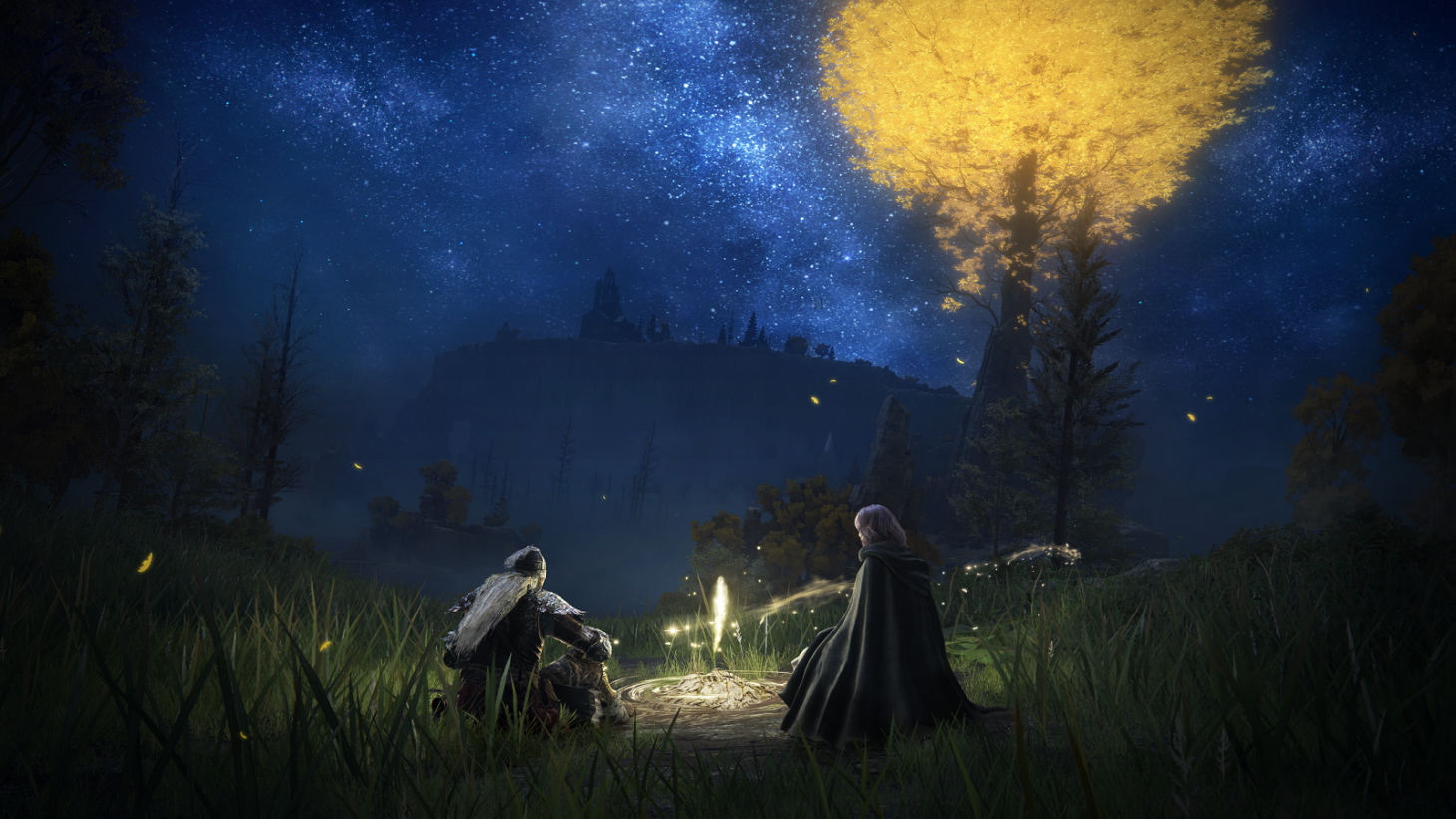Reddit user Magister Organi has recently been studying Elden Ring‘s song lyrics in order to try to better understand both what they mean and what language they are actually in. In the process, they have uncovered not only some fascinating facts about the game’s soundtrack but some interesting tidbits about the origins and significance of Elden Ring creator Hidetaka Miyazaki’s often confusing style of storytelling.
“Most of the lyrics are just computer-generated syllables sung by a Hungarian choir, very few were written, like the song of the bats and originally the final battle song lyrics,” Organi says via a recent Reddit post. “The music producer who wrote the lyrics of Radagon and the Elden Beast told me From Soft ordered him to turn the correct Latin lyrics into gibberish and so the producer turned them into gibberish…”
The research itself is absolutely fascinating, and I highly recommend either reading more about it via the post link above or checking out Oragni’s YouTube channel, Antonius Tertius. However, this section of Oragni’s report really jumped out at me:
“In his childhood, Miyazaki used to read books beyond his comprehension. He only understood half of the words and had to fill in the story gaps with his imagination. That’s exactly what he wants us to experience in his games, whose storytelling tends to be hazy. That’s why Miyazaki didn’t make a point of including Latin lyrics in all Elden Ring songs, quite the contrary he preferred to use gibberish in most of the songs. Miyazaki wants us to use our imagination to fill in the gaps he intentionally left.”
The idea that Miyazaki’s obtuse style of storytelling is actually a kind of tribute to the ways that he (and most other children) try to understand complicated works is certainly fascinating. It also appears to be accurate. After all, in a 2015 interview with The Guardian, Miyazaki revealed that he grew up “tremendously poor” and incredibly curious. As such, he would often have to rely on whatever works he could find at the local library whenever he wanted to dive into a fictional world. The writer suggests that Miyazaki admits that he didn’t always understand the books he could find at the library but that he learned to enjoy the process of figuring out those works as best as he could by allowing his imagination to fill in the blanks.
That actually makes a lot of sense. I”m sure that Miyazaki isn’t alone in his assertion that he was able to enjoy many pieces of fiction at a young age even if he didn’t fully understand them. Who among us didn’t see that one movie or read that one book that was a little over our heads but resonated with us in some way we couldn’t quite explain?
More importantly, recognizing the inspiration for Miyazaki’s storytelling style makes it that much easier to appreciate what his games do (or at least try to do) from a storytelling and worldbuilding perspective. While it’s easy to criticize the non-traditional stories of most Soulsborne games simply because they’re not easy to understand, looking at those stories through a more traditional critical and analytical lens also robs them of their power. Many of the best Soulsborne stories inspire a feeling that you don’t need to be able to define simply to appreciate.
In those games, it’s often more important to appreciate the feeling that there is something significant happening rather than needing to understand exactly what that something is. Of course, much like the best ambiguous storytellers (David Lynch, for instance), it’s the fact that Miyazaki’s stories still hold up under closer scrutiny that ultimately makes them as impressive as they are. If you need them to make sense, they can make sense. Of course, it can sometimes be too easy to get caught up in needing everything “explained” that you forget to appreciate the intentional ambiguity of the thing and how that ambiguity is designed to inspire you to fill in the blanks or simply learn to love what you do not know.
